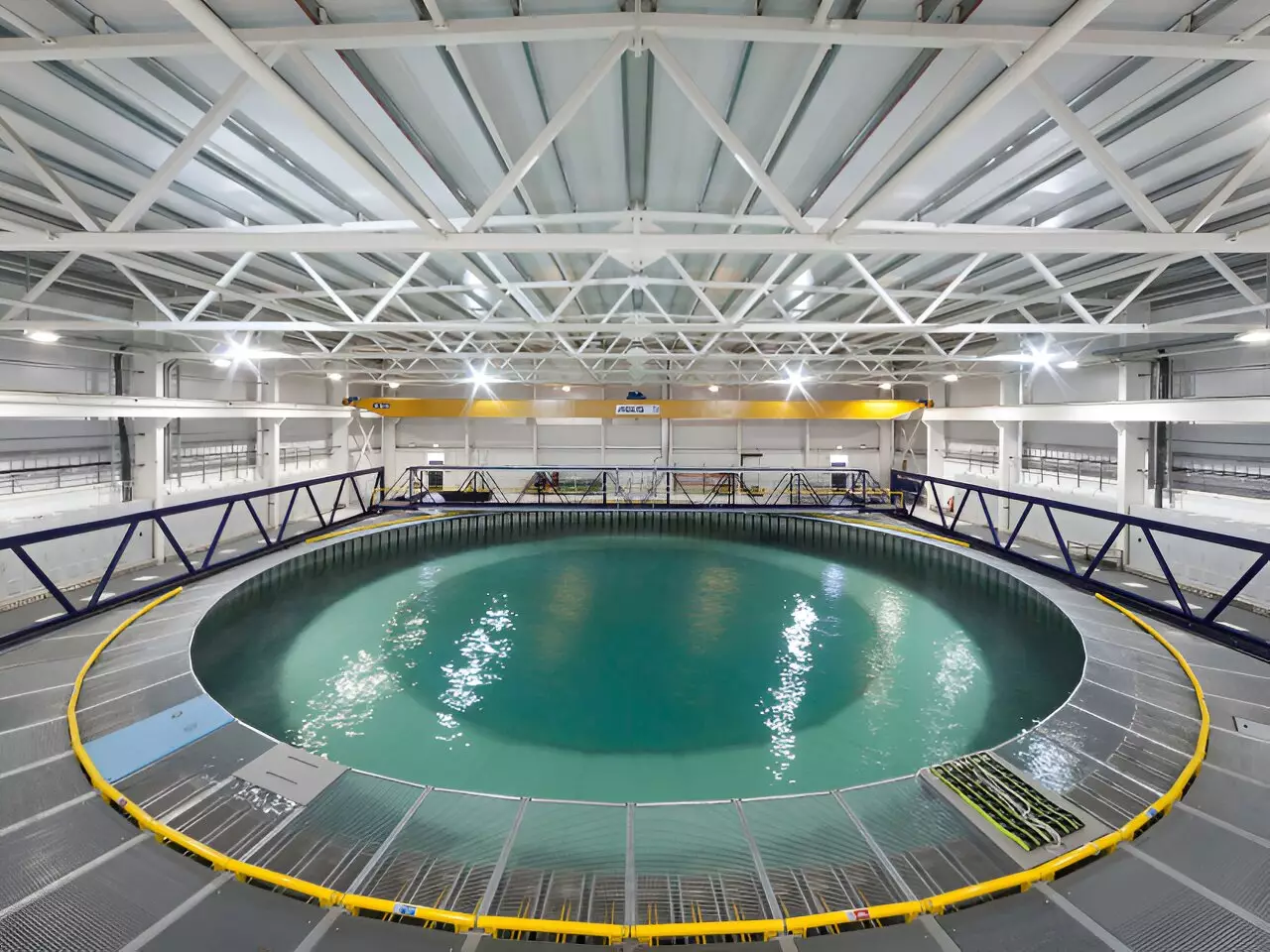The ocean is often perceived as a serene and predictable environment, a realm where waves rise and fall in a rhythmic dance dictated by the winds and tides. However, recent research indicates that the reality is far more intricate than conventional wisdom suggests. A groundbreaking study published in *Nature* has unveiled the remarkable potential for ocean waves to exhibit extreme behavior, particularly when their paths intersect in unpredictable ways. This article delves into the implications of these findings, as well as the fundamental shifts they prompt in our understanding of ocean dynamics and engineering considerations.
For decades, our understanding of wave mechanics has largely stemmed from a two-dimensional perspective, wherein waves are thought to progress in a single direction. This simplification, while useful, has limited our grasp of oceanic behavior, particularly in scenarios involving complex wave interactions. Dr. Samuel Draycott from The University of Manchester and Dr. Mark McAllister from the University of Oxford have contributed to a study that challenges this notion, demonstrating that waves can adopt a three-dimensional form, allowing for an entirely new level of steepness and complexity.
The revelation that waves can become twice as steep before breaking, compared to traditional two-dimensional waves, marks a significant paradigm shift. Even after breaking, these multidimensional waves can continue to gain height—a phenomenon that defies established expectations in wave behavior. The researchers observed that such extreme cases often arise in conditions where wave systems intersect, particularly during severe weather events like hurricanes.
The practical implications of these findings cannot be overstated. Current design protocols for maritime structures, such as wind turbines and offshore oil rigs, are predominantly based on two-dimensional wave models. As Dr. McAllister notes, this oversight may lead engineers to underestimate potential wave heights, potentially resulting in structural designs that are not adequately resilient against actual ocean conditions. The reinforced understanding of three-dimensional waves calls for a thorough reevaluation of current engineering practices to better anticipate extreme wave behavior.
The concept of wave breaking, traditionally associated with a definitive outcome—as waves crest and form whitecaps—takes on a new dimension with these findings. Professor Ton van den Bremer of TU Delft pinpointed the unprecedented ability of certain waves to continue growing even after they’ve broken, amounting to what can only be described as a powerful new force in ocean dynamics. This is particularly relevant for offshore structures that operate in complex marine environments where wave systems can converge, often resulting in unpredictable and hazardous conditions.
Beyond engineering applications, the study’s implications extend to environmental sciences, particularly in understanding air-sea interaction and the transport of substances across oceanic waters. Wave breaking plays a critical role in gas exchange processes, including the absorption of carbon dioxide, thereby affecting climate models and our collective understanding of climate change dynamics. Furthermore, these waves facilitate the movement of particulate matter, including essential nutrients and microplastics, which underscore their importance in marine ecology.
Dr. Draycott highlights that wave breaking significantly influences the dispersal of phytoplankton and other marine organisms. The enhanced understanding of three-dimensional wave behavior can thus provide valuable insights into marine ecosystem dynamics, particularly in light of ongoing climate change and pollution challenges.
The methodology employed in this study also marks a significant advancement in wave measurement techniques. Utilizing the FloWave Ocean Energy Research Facility at the University of Edinburgh, the team harnessed a cutting-edge multidirectional wave basin, which facilitates the generation of waves from various angles. This capability not only allows for a more accurate recreation of real-world sea states, but also enables unprecedented observation of wave breaking phenomena that were previously difficult to isolate in laboratory conditions.
Dr. Thomas Davey, Principal Experimental Officer at FloWave, underscores the importance of modeling the complexities of actual ocean environments to advance research in wave behavior. This innovative approach is a crucial step toward understanding the changing dynamics of our oceans, especially in the context of climate variability and extreme weather events.
As we uncover the intricate behaviors of ocean waves, the need for updated engineering practices and more nuanced environmental models becomes evident. The shift from a two-dimensional understanding to embracing three-dimensional dynamics is not merely academic; it carries profound implications for safety, ecological health, and our broader relationship with the ocean. This research beckons both scientists and engineers to reimagine their approaches to studying and designing for one of nature’s most unpredictable forces—our oceans. Recognition of the complexity within ocean waves stands to reshape fundamental science and engineering, ultimately enhancing our preparedness for the unpredictable challenges posed by the world’s oceans.


Leave a Reply